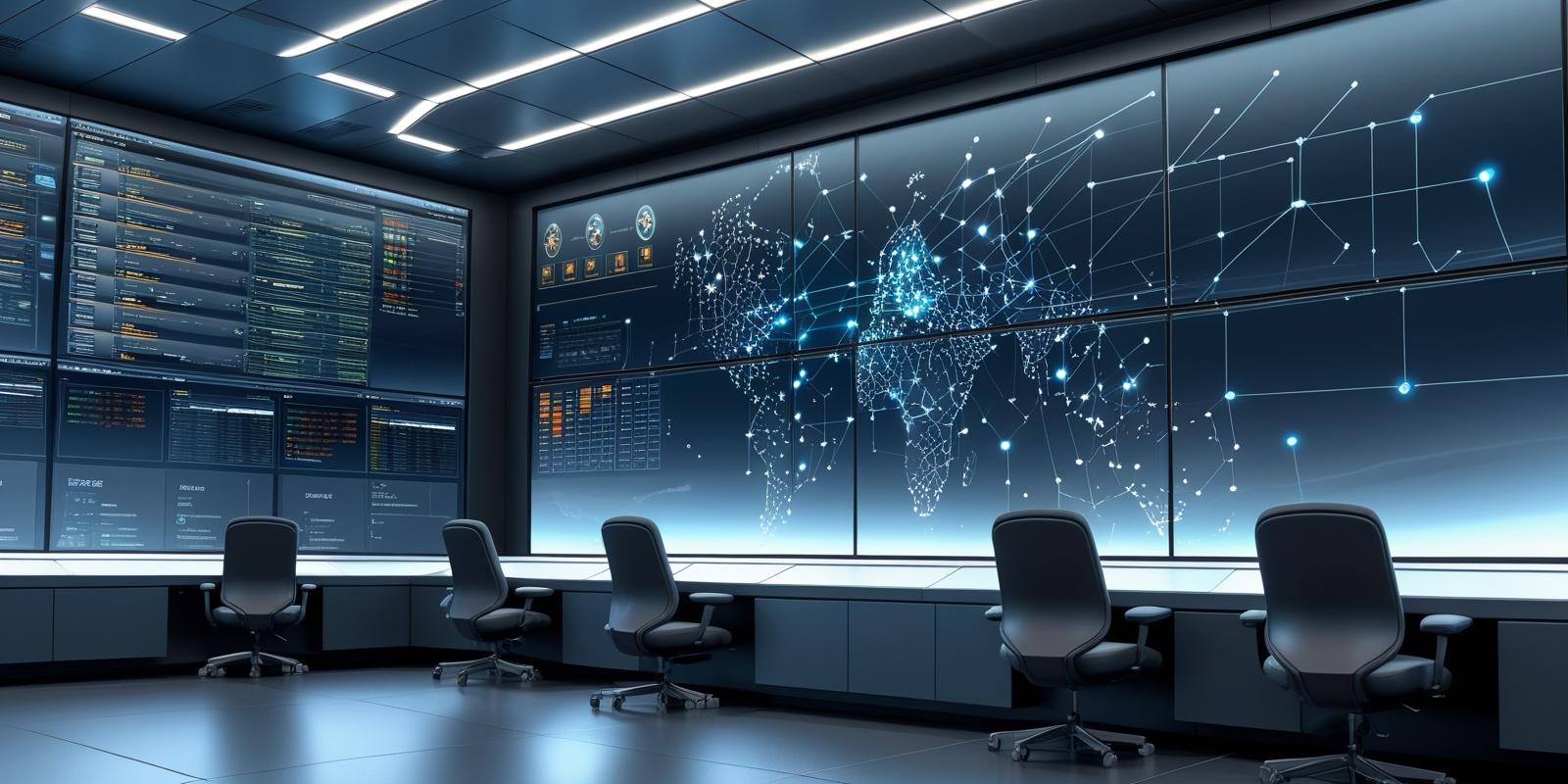Command Control Center Solutions
A command and control room, also known as a control room or operations center, is a centralized hub where critical information is monitored, managed, and analyzed to ensure the smooth operation of complex systems. These systems can span diverse fields, including industrial processes, military operations, emergency response, transportation networks, and energy management systems. In essence, it acts as a nerve center for situational awareness, rapid decision-making, and performance oversight.
Key elements
- Real-time monitoring: Observes critical systems or processes, tracking live sensor input, monitoring networks, overseeing equipment status, or viewing video surveillance feeds.
- Data visualization: Displays information from various platforms using dashboards, large video walls, or operator screens.
- Incident response: Equipped with alarm systems, workflow automation tools, and escalation guides for predefined response protocols.
- Communication and collaboration: Includes VoIP networks, internal intercoms, two-way radios, and secure messaging tools for coordination between operators, field teams, and external agencies.
- Centralized control: Consolidates multiple subsystems into a single point of access, unifying control and reducing complexity.
- Activity logging and regulatory compliance: Records operator inputs, alerts, and system responses for audits, post-event analysis, and compliance.
- Integration with third-party systems: Seamlessly interacts with platforms like ERP, SCADA, BI dashboards, access control networks, and video surveillance systems.
- Ergonomic design and operator wellness: Focuses on comfortable workstations, adjustable chairs, and strategic screen placement to reduce strain and boost alertness during long shifts.
Types : Command Control Centre differ based on their specific industry and purpose. Some common types include: Shop on MagicRainbow
- Situation centers: Support decision-making, crisis management, and multi-agency coordination at the highest levels of government and corporations.
- Operations centers: Oversee IT infrastructure (Network Operations Center), physical security (Security Operations Center), cyber threats (Cybersecurity Operations Center), traffic management (Traffic Operations Center), etc.
- KPI rooms: Visualize organizational metrics and support executive-level monitoring and planning, also known as performance or decision rooms.
- Industrial control rooms: Ensure the continuous, safe, and efficient operation of complex physical processes in energy, mining, manufacturing, and other industries.
- General-purpose control rooms: Offer focused monitoring and control of a specific system or workflow.
Technology : Modern command and control rooms utilize a range of advanced technologies, including:
- Video walls: Large display systems that showcase integrated data for visual monitoring.
- SCADA systems: Supervisory Control and Data Acquisition systems for monitoring and operating industrial processes.
- KVM technology (Keyboard, Video, Mouse): Allows operators to control multiple machines from a single keyboard and mouse, improving efficiency and workspace organization.
- CAD technology (Computer-Aided Dispatch): Increases the efficiency of dispatching requests to relevant personnel or units.
- AI-powered analytics: Automates tasks like threat detection, anomaly identification, and system diagnostics, providing predictive monitoring capabilities.
- Unified communication systems: Integrate video conferencing, messaging, voice calls, and file sharing for seamless collaboration.
- Cybersecurity and data encryption: Secure AV solutions, encryption protocols, access controls, and real-time threat monitoring protect sensitive data and operations.
- Scalable and flexible solutions: Modular LED video walls, flexible control room software, and cloud-based data storage allow for future growth and adaptation.
In conclusion, command and control rooms are crucial facilities that enable organizations to manage complex operations, especially in critical situations. They combine advanced technology, ergonomic design, and efficient workflows to empower decision-makers with real-time information and facilitate coordinated responses.

